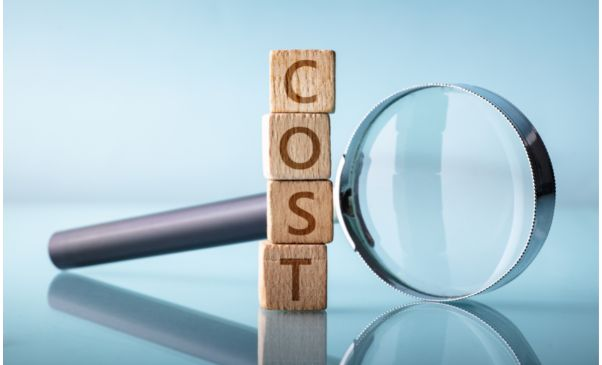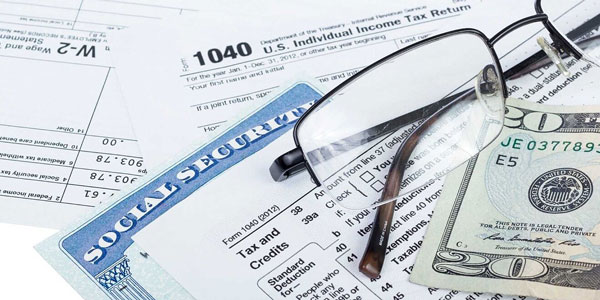What is the inventory carrying cost?
Jan 17, 2024 By Triston Martin
The inventory carrying cost is the cost of carrying an inventory item. You can measure the cost in dollars, euro, yen, or other currency. Consider a business that manufactures and then markets its products. The inventory carrying cost is how much the company has spent on carrying the raw materials, tools, machines, supplies and other things required to make this product. It does not mean the inventory needs to be carried out for an infinite amount of time.
How does inventory carrying cost works
Inventory carrying cost refers to companies' financial burden when keeping inventory on hand. This cost is caused by the fact that it takes time and money to produce and stock an inventory. When a company sells an item, it has to take the loss on the sale even if it has already produced and stocked the item. The inventory carrying cost can be significant, especially for companies with many inventories.
Why does inventory carrying cost affect your business?
It affects everything from the amount you can sell your products for to the amount of profit you can make. There are a few reasons why inventory carrying cost matters so much.
First, it impacts how much money you are making as a business. If you have high inventory carrying costs, you will likely be selling your products for a lower price than if your inventory carrying cost was lower. It means you will not be making as much profit as you would if your inventory carrying cost is lower.
Secondly, if your inventory carrying cost is too high, it may impact how many people are willing to buy your products. If your product costs too much and there is a high probability that someone will not be able to afford it, they may not want to buy it. It could lead to a decrease in sales and profits for your business.
Finally, having too high an inventory carrying cost can also lead to other problems. For example, it can create storage space issues in your business.
How to inventory carrying costs be reduced?
There are 5 ways in below to Reduce Inventory Carrying Costs
- Keep track of your inventory levels
- Remove obsolete or low-value items from your inventory
- Reduce the number of items you carry in stock
- Sell products that are no longer needed
- Negotiate with suppliers for better prices
How to calculate inventory carrying cost?
When calculating inventory carrying cost, you need to consider two factors: the cost of the raw materials used in the product and the cost of labour involved in manufacturing and distributing the product.
The first factor is usually much higher than the second, so it's important to consider which category your product falls into. For example, products manufactured with a lot of raw materials (like cars) will have a higher inventory carrying cost than those manufactured with lighter materials (like clothing).
Should you create a buffer stock of inventory?
There is a lot of debate on whether or not you should create a buffer stock of inventory. Some people believe it's important to have a stock of inventory in case there is an emergency and sales fall off. Other people think that creating a buffer stock can lead to overproduction, which can cause the company to lose money. Ultimately, deciding whether to create a buffer stock comes down to individual business decisions.

Types of inventory carrying cost
A few different types of inventory carrying costs can affect a business. The types are given in the following:
Fixed Inventory carrying cost
It refers to the amount of money an organization spends on items it expects to keep in stock for a certain period. It is usually the case with products that have set quantities and will not be sold beyond that number. For example, Nike sells shoes in limited quantities each day. As a result, Nike has a fixed inventory carrying cost.
Variable Inventory carrying cost
It refers to the amount of money an organization spends on items it expects to sell in different quantities at different times. For example, Amazon.com has a variable inventory carrying cost because it will sell more DVDs in December than in July. In other words, the company expects to make more money selling DVDs during the holiday season than it would at other times of the year.
Flexible Inventory carrying cost
It refers to the amount of money an organization spends on items it does not expect to sell in specific quantities or at specific times. For example, Apple Inc.'s variable Inventory carrying cost is related to how many new products it releases yearly.

Pros and Cons
There are very pros and cons of inventory carrying cost which is given in following:
Pros:
• Inventory carrying cost calculation helps businesses make informed decisions about their inventory levels.
• The tool provides a straightforward way to evaluate how much it costs to maintain an inventory
• It is simple and easy to use, making it accessible to many businesses.
• The Inventory Carrying Cost Calculator can help businesses make informed decisions about their inventory levels and how much it costs to maintain them.
• The calculator helps compare different types of Inventory and determine the most cost-effective way to manage it.
Cons:
• The Inventory Carrying Cost Calculator is only available in English now.
• The tool may not be relevant for all businesses and may not provide the most accurate results.
• Some business types may find the tool too complex or difficult to use.
Conclusion:
Inventory carrying cost holding an inventory includes the costs of raw materials, labour, and overhead. The inventory carrying cost will affect a company's profit margins, as well as its stock price. We hope you like our article and understand the inventory carrying cost.
-
 Mortgages Dec 19, 2023
Mortgages Dec 19, 2023The Surprising Truth: 55% of Greek Life Students Use Loans to Pay Dues
Unveiling a startling reality in the higher education landscape, "The Surprising Truth: 55% of Greek Life Students Use Loans to Pay Dues" provides an in-depth exploration of fraternity and sorority students leveraging student loans to cover their Greek life expenses.
-
 Taxes Dec 03, 2023
Taxes Dec 03, 2023How Do You Pay Your Quarterly Taxes?
Fill out Form 1040-ES, the Estimated Tax for Individuals, to calculate your estimated tax amount for the quarter and submit it with your quarterly tax payment. Using your income, deductions, and credits, you may determine how much tax you owe with the help of this form. Once you have the total, you can send it via the Electronic Federal Tax Payment System (EFTPS).
-
 Taxes Nov 13, 2023
Taxes Nov 13, 2023How Do You Figure Your Social Security Tax Payment?
At regular periods, a portion of your income is withheld to pay for the Social Security tax, also known as the Old-Age, Survivors, and Disability Insurance program tax. The law mandates that employees and employers contribute the same amount to Social Security annually. Social Security contributions will increase to 6.2% of income or earnings in 2021 and 2022.
-
 Know-how Nov 30, 2023
Know-how Nov 30, 2023Selling Your Car? Here's How to Get the Best Deal
Looking to sell your car and get the best deal? This comprehensive guide will walk you through the process step by step, from preparing your vehicle to negotiating with buyers.
